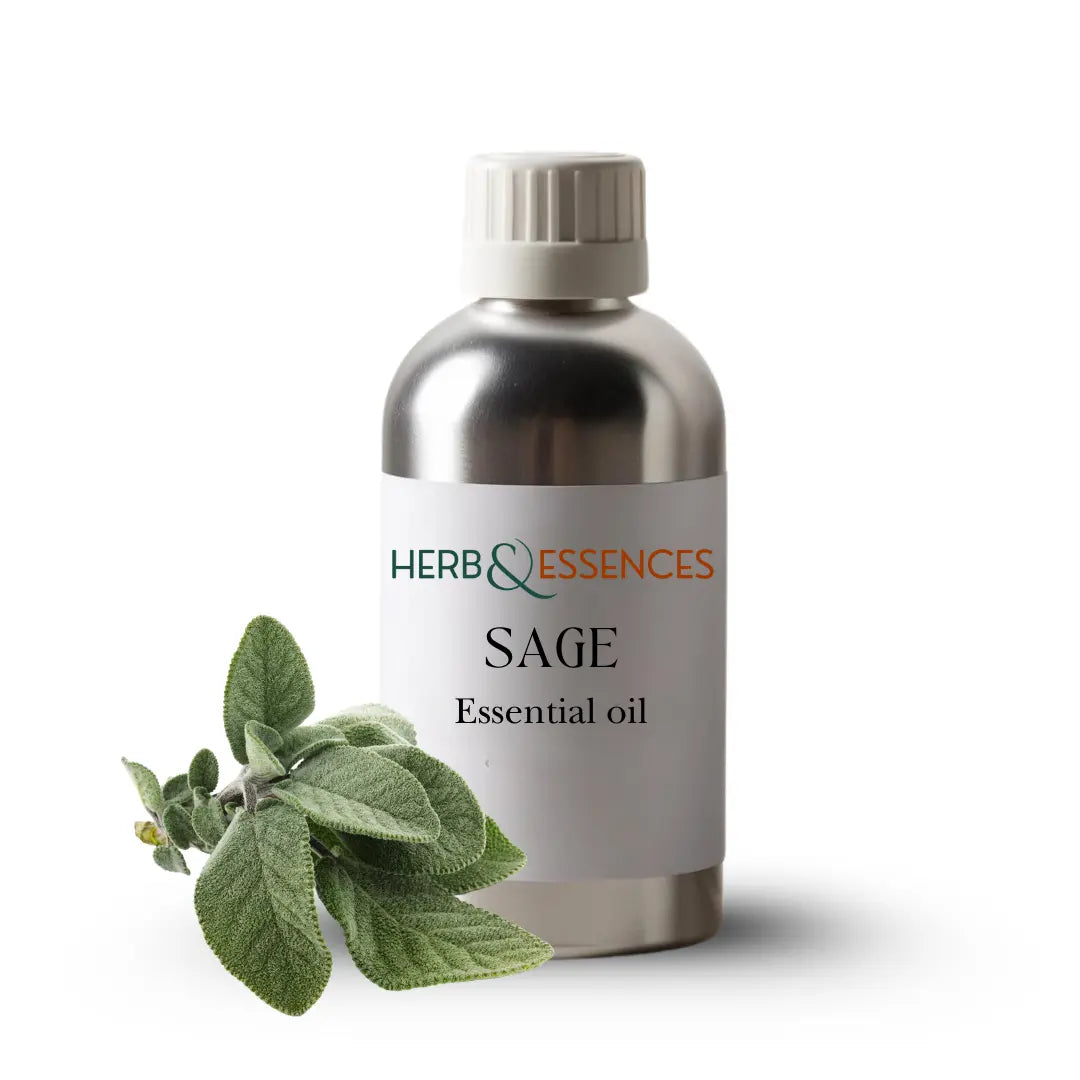Sage Essential Oil
Sage Essential Oil
Couldn't load pickup availability
Share
Sage aroma essential oil
Botanical Information
Sage aroma essential oil is derived from the leaves of Salvia officinalis, a perennial shrub belonging to the Lamiaceae family. Known for its rich herbal, earthy, and slightly camphorous aroma, Sage oil has been celebrated for centuries in traditional medicine and rituals for its purifying and restorative qualities. It is often utilized for its calming effects and ability to support mental clarity.
Origin and Source
Native to the Mediterranean region, Sage thrives in sunny areas with well-drained soils. Today, it is cultivated worldwide, with notable production in Spain, Italy, Greece, and Morocco. Leaves are harvested sustainably, ensuring preservation of the plant’s natural habitats and maintaining ecological balance.
Extraction Method
Sage aroma essential oil is extracted via steam distillation:
· Fresh or dried leaves are distilled to extract the oil while preserving its aromatic and therapeutic compounds. This method ensures a pure and potent oil suitable for diverse applications.
Physical Properties
· Appearance: Pale yellow to light green liquid with a smooth texture.
· Aroma: Herbal, earthy, and slightly camphorous with subtle green undertones.
· Viscosity: Light, ideal for blending with carrier oils and other essential oils.
· Solubility: Insoluble in water; soluble in carrier oils and alcohol.
Technical Specification
· Specific Gravity: 0.910–0.930.
· Refractive Index: 1.470–1.482.
· Flashpoint: Approximately 70°C.
Uses and Applications
· Aromatherapy: Supports relaxation, focus, and emotional balance.
· Skincare: Used in creams, toners, and masks for its purifying and anti-inflammatory properties.
· Massage Therapy: Blended with carrier oils for calming massages that ease tension.
· Natural Remedies: Traditionally applied to alleviate respiratory discomfort and improve circulation.
· Spiritual Practices: Incorporated into cleansing rituals to purify and restore energy.
· Perfumery: Acts as a middle note, adding herbal depth to fragrance compositions.
· Home Care: Included in cleaning products for its antibacterial and refreshing properties.
Benefits and Properties
· Mental Clarity: Enhances focus, memory, and cognitive function.
· Skin-purifying: Helps cleanse and rejuvenate the skin, reducing oiliness and blemishes.
· Anti-inflammatory: Soothes irritation and redness in skincare formulations.
· Relaxing Atmosphere: Creates a calming and restorative environment when diffused.
· Aromatic Freshness: Elevates blends with its herbal and earthy complexity.
Safety Information
· Dilution: Always dilute Sage aroma essential oil with a carrier oil before applying directly to the skin to prevent irritation.
· Patch Test: Perform a patch test on a small area of skin to check for sensitivities or allergic reactions.
· Avoid Contact: Do not apply near sensitive areas, such as the eyes or open wounds.
· Medical Precautions: Consult a healthcare professional if pregnant, breastfeeding, or undergoing medical treatment, particularly for epilepsy or high blood pressure.
· Keep Away: Store safely out of reach of children and pets.
Storage and Shelf Life
· Storage: Store in a cool, dry place away from sunlight, heat, and moisture. Amber or cobalt blue glass bottles are recommended to preserve its aromatic quality.
· Shelf Life: Typically lasts 2–3 years under optimal storage conditions.
Packaging and Handling
· Packaging: Glass bottles are ideal for smaller quantities, while HDPE containers are suitable for bulk storage.
· Sealing: Ensure containers are tightly sealed to prevent evaporation and contamination.
· Handling: Use sterilized tools during transfer or application to maintain purity.
Sustainability and Ethics
· Eco-conscious Practices: Produced using sustainable harvesting and cultivation methods to protect Sage plants and their ecosystems.
· Cruelty-free: Not tested on animals, adhering to ethical production standards.
· Vegan-friendly: Contains no animal-derived components, making it suitable for environmentally conscious consumers.
· Fair Trade: Often sourced through initiatives supporting local farmers and promoting equitable livelihoods.








